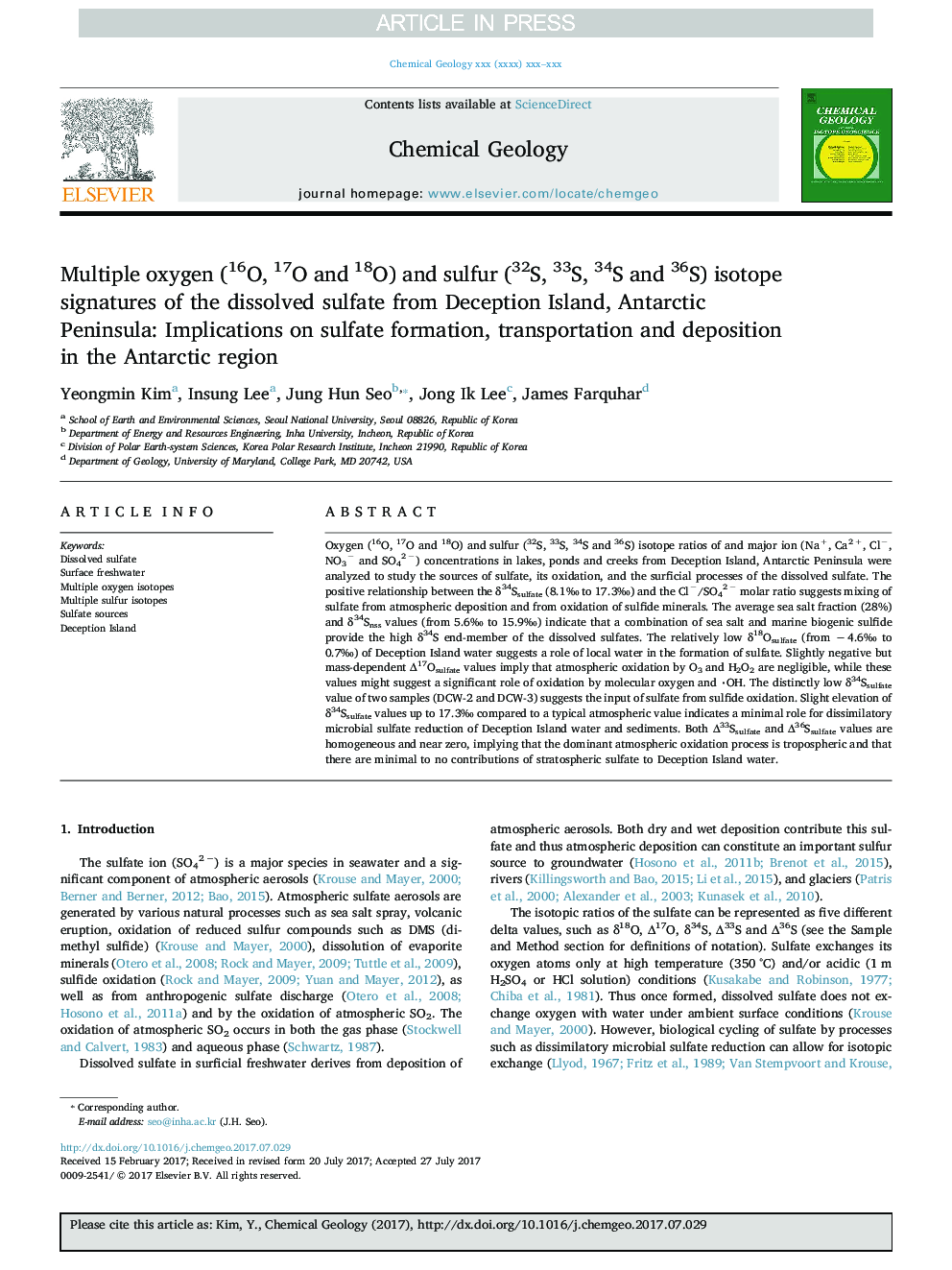| Article ID | Journal | Published Year | Pages | File Type |
|---|---|---|---|---|
| 5782873 | Chemical Geology | 2017 | 14 Pages |
Abstract
Oxygen (16O, 17O and 18O) and sulfur (32S, 33S, 34S and 36S) isotope ratios of and major ion (Na+, Ca2 +, Clâ, NO3â and SO42 â) concentrations in lakes, ponds and creeks from Deception Island, Antarctic Peninsula were analyzed to study the sources of sulfate, its oxidation, and the surficial processes of the dissolved sulfate. The positive relationship between the δ34Ssulfate (8.1â° to 17.3â°) and the Clâ/SO42 â molar ratio suggests mixing of sulfate from atmospheric deposition and from oxidation of sulfide minerals. The average sea salt fraction (28%) and δ34Snss values (from 5.6â° to 15.9â°) indicate that a combination of sea salt and marine biogenic sulfide provide the high δ34S end-member of the dissolved sulfates. The relatively low δ18Osulfate (from â 4.6â° to 0.7â°) of Deception Island water suggests a role of local water in the formation of sulfate. Slightly negative but mass-dependent Î17Osulfate values imply that atmospheric oxidation by O3 and H2O2 are negligible, while these values might suggest a significant role of oxidation by molecular oxygen and OH. The distinctly low δ34Ssulfate value of two samples (DCW-2 and DCW-3) suggests the input of sulfate from sulfide oxidation. Slight elevation of δ34Ssulfate values up to 17.3â° compared to a typical atmospheric value indicates a minimal role for dissimilatory microbial sulfate reduction of Deception Island water and sediments. Both Î33Ssulfate and Î36Ssulfate values are homogeneous and near zero, implying that the dominant atmospheric oxidation process is tropospheric and that there are minimal to no contributions of stratospheric sulfate to Deception Island water.
Related Topics
Physical Sciences and Engineering
Earth and Planetary Sciences
Geochemistry and Petrology
Authors
Yeongmin Kim, Insung Lee, Jung Hun Seo, Jong Ik Lee, James Farquhar,
